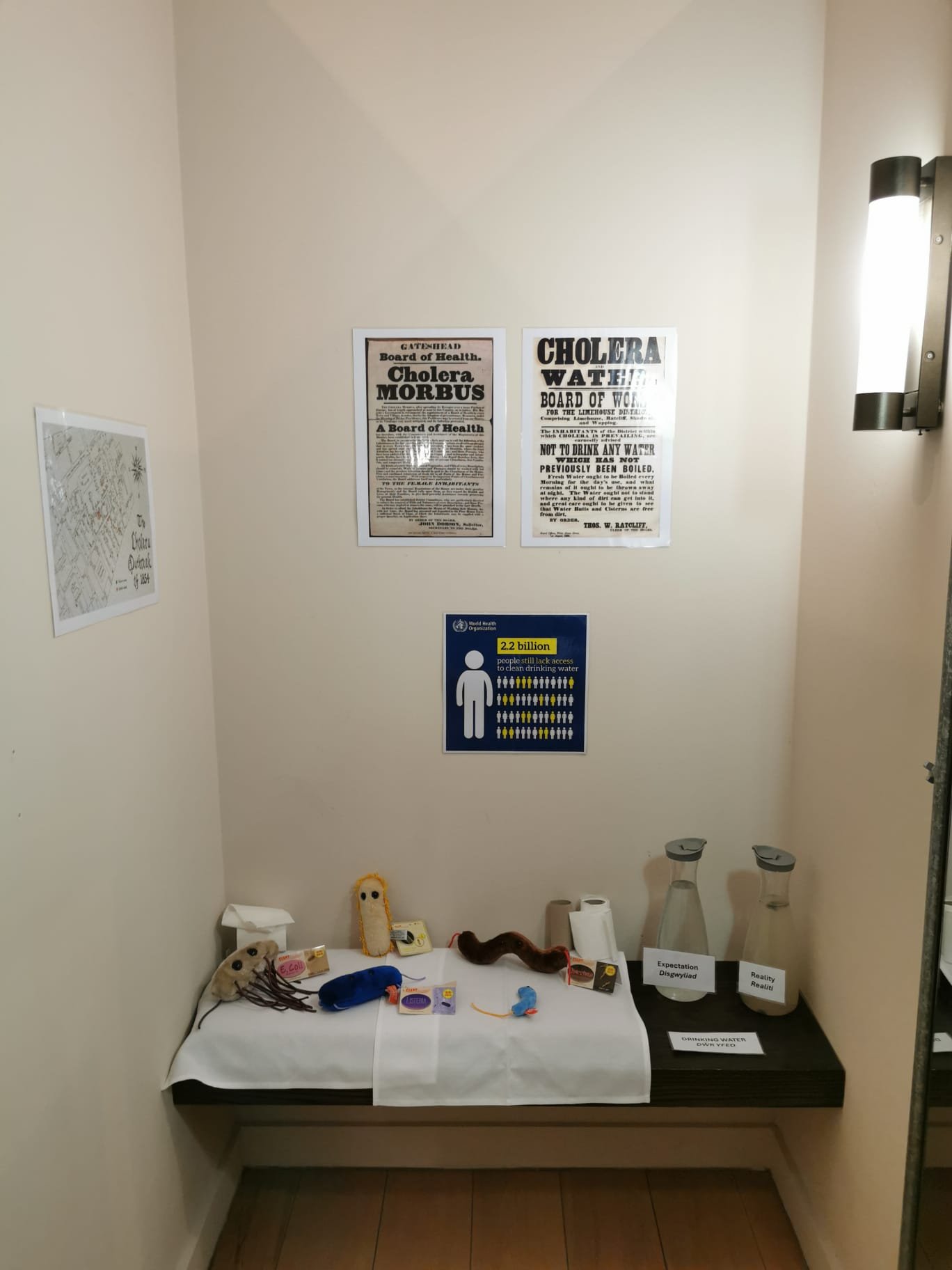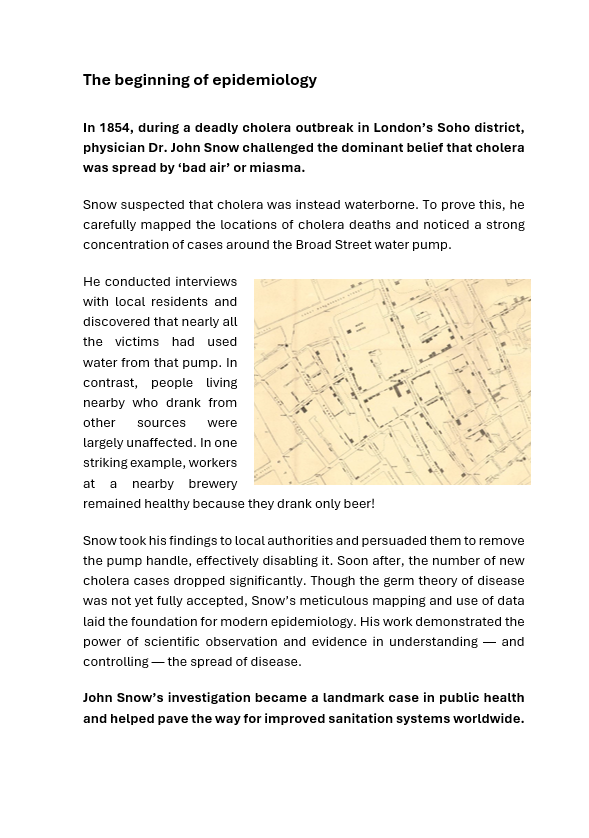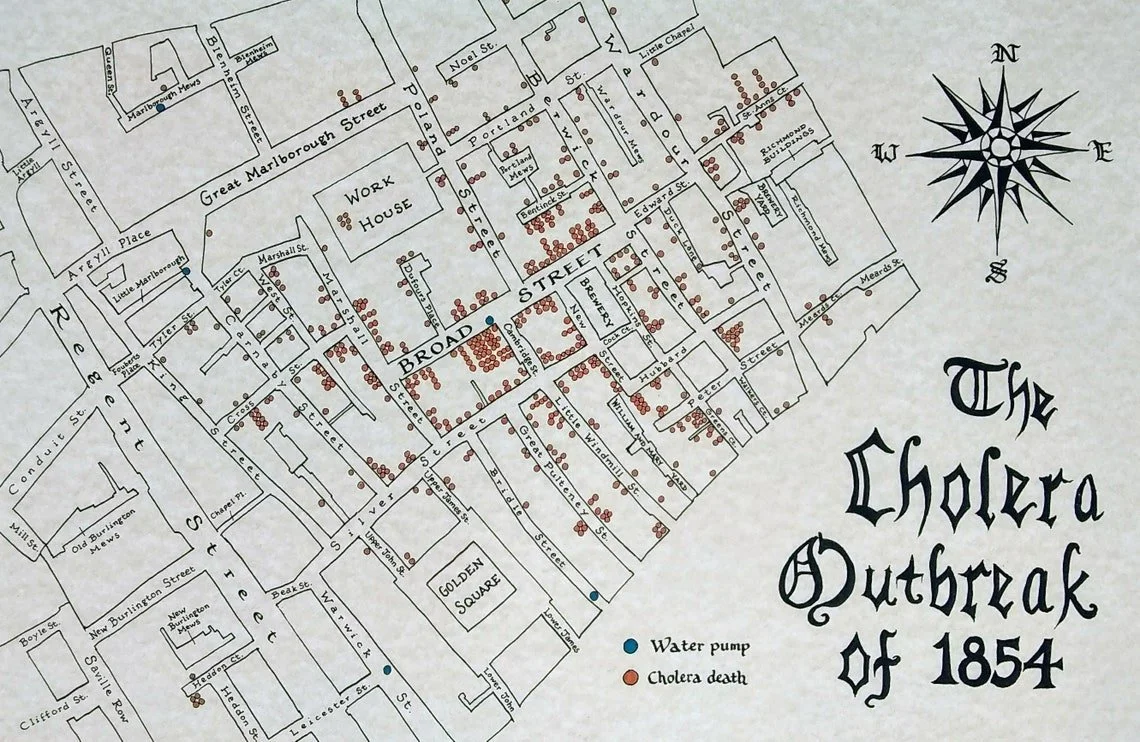
Horror Show – Cholera
A lesson in clean water and hygiene
Cholera is a deadly infectious disease caused by the bacterium Vibrio cholerae, which spreads through contaminated water or food. It causes acute diarrhoea, leading to rapid dehydration and, if untreated, death.
The display featured a jar of clean drinking water and one with dirty, contaminated water to illustrate the importance of sanitation and hygiene in containing cholera and other diseases - next to a reminder that according to the WHO 2.2 billion people worldwide currently lack access to clean drinking water.
Giant microbes were used to showcase a variety of diarrhoea-causing bacteria (Vibrio cholerae, Shigella dysenteriae, E. coli, Campylobacter jejuni, Listeria monocytogenes).
Posters provided information about the disease in general, an account of John Snow’s epidemiological work and his ‘ghost map’ of Soho from 1854, historical public health warnings about cholera outbreaks, and a map of current cholera cases in the world.
Materials to download, in English and Welsh:
➡️ Story Time: John Snow and the Pump Handle of Public Health
Historically, cholera has caused devastating pandemics. The first one began in India in the early 19th century and spread globally through trade and colonisation. When the third wave hit London in 1854, physician John Snow famously traced a local outbreak to a contaminated water pump—laying the foundation for modern epidemiology.
Over the following 100 years, cholera struck repeatedly in cities and communities with poor sanitation, claiming millions of lives. Improvements in public health infrastructure, particularly clean water supplies and sewer systems, led to a dramatic decline in cases across industrialised nations by the mid-20th century.
While nowadays cholera is preventable and treatable, it remains a serious threat, especially in parts of Africa and South Asia, and in areas affected by conflicts or natural disasters. In these regions, unsafe water and inadequate sanitation can allow the disease to spread quickly.
Cholera is just one example for a disease transmitted by contaminated water. Similar cases of diarrhoea, although less severe, may be caused by bacteria such as E. coli, Salmonella and Shigella, protozoan parasites, and viruses like hepatitis A virus.
The beginning of epidemiology
In 1854, during a deadly cholera outbreak in London’s Soho district, physician Dr John Snow challenged the dominant belief that cholera was spread by ‘bad air’ or miasma.
Snow suspected that cholera was instead waterborne. To prove this, he carefully mapped the locations of cholera deaths and noticed a strong concentration of cases around the Broad Street water pump.
He conducted interviews with local residents and discovered that nearly all the victims had used water from that pump. In contrast, people living nearby who drank from other sources were largely unaffected. In one striking example, workers at a nearby brewery remained healthy because they drank only beer!
Snow took his findings to local authorities and persuaded them to remove the pump handle, effectively disabling it. Soon after, the number of new cholera cases dropped significantly. Though the germ theory of disease was not yet fully accepted, Snow’s meticulous mapping and use of data laid the foundation for modern epidemiology. His work demonstrated the power of scientific observation and evidence in understanding — and controlling — the spread of disease.
John Snow’s investigation became a landmark case in public health and helped pave the way for improved sanitation systems worldwide.
➡️ Horror Show
Return to the Horror Show starting page
➡️ Pop-Up Shop 2025
Go to the main event page of our 2025 Pop-Up Shop










